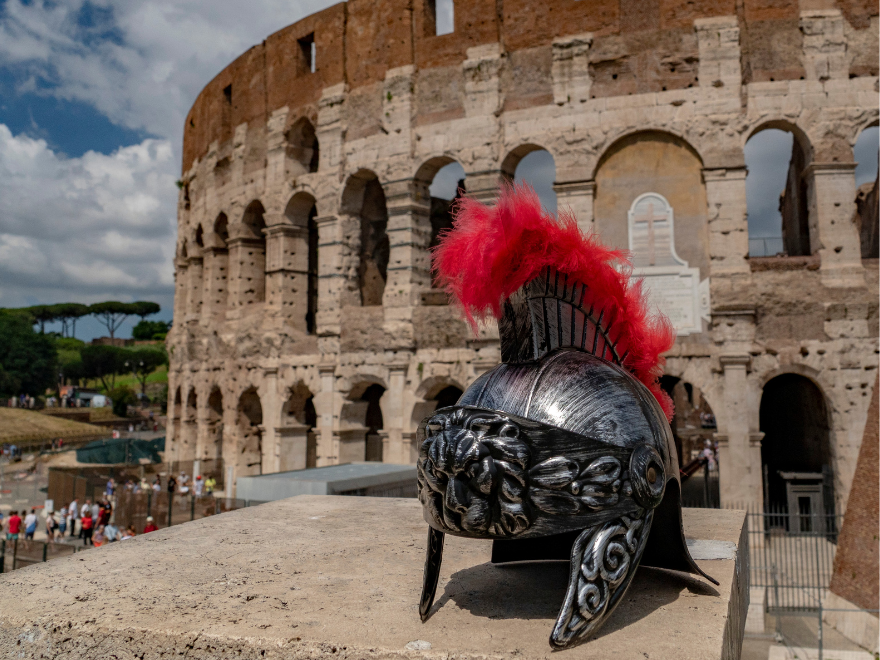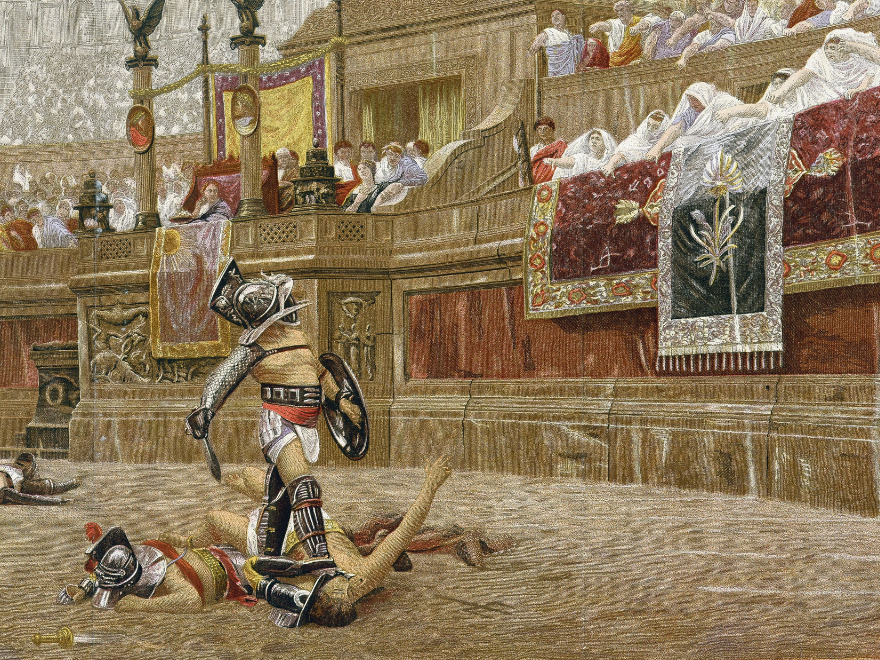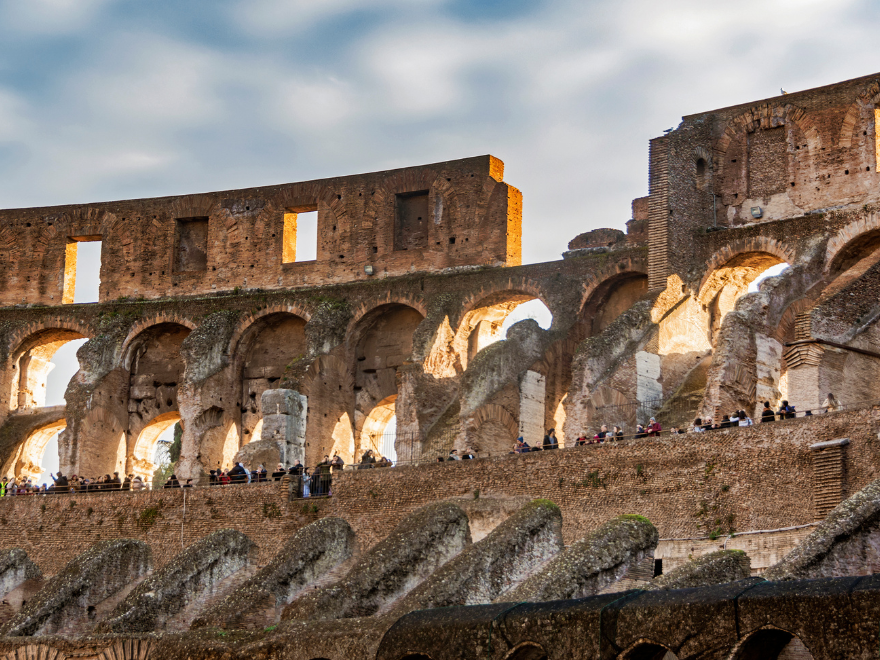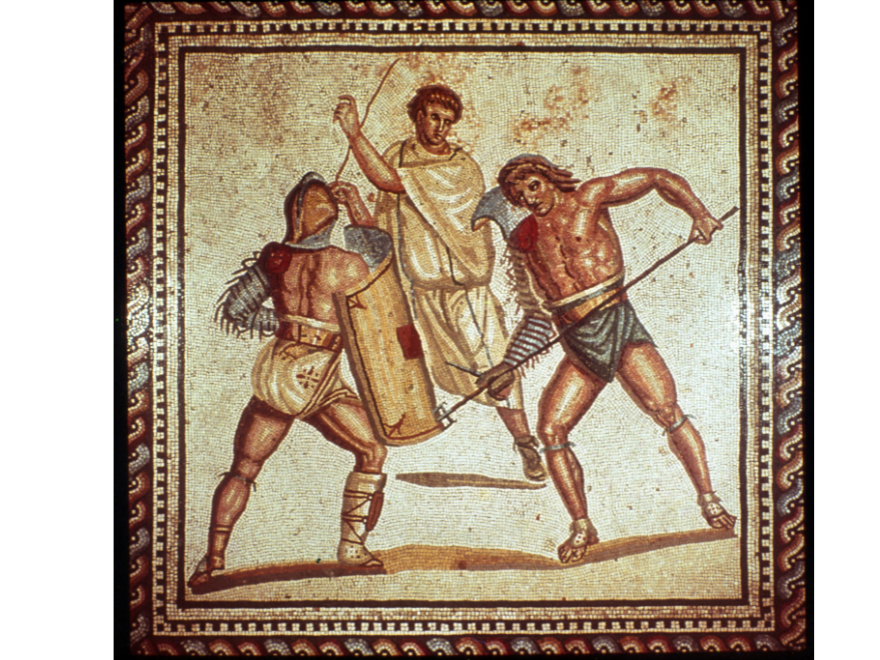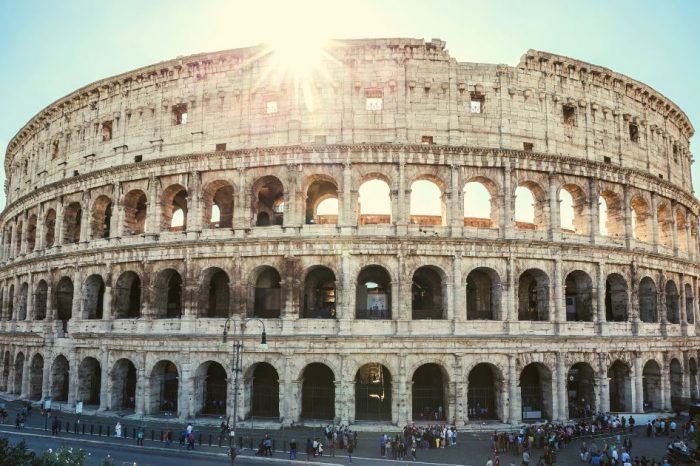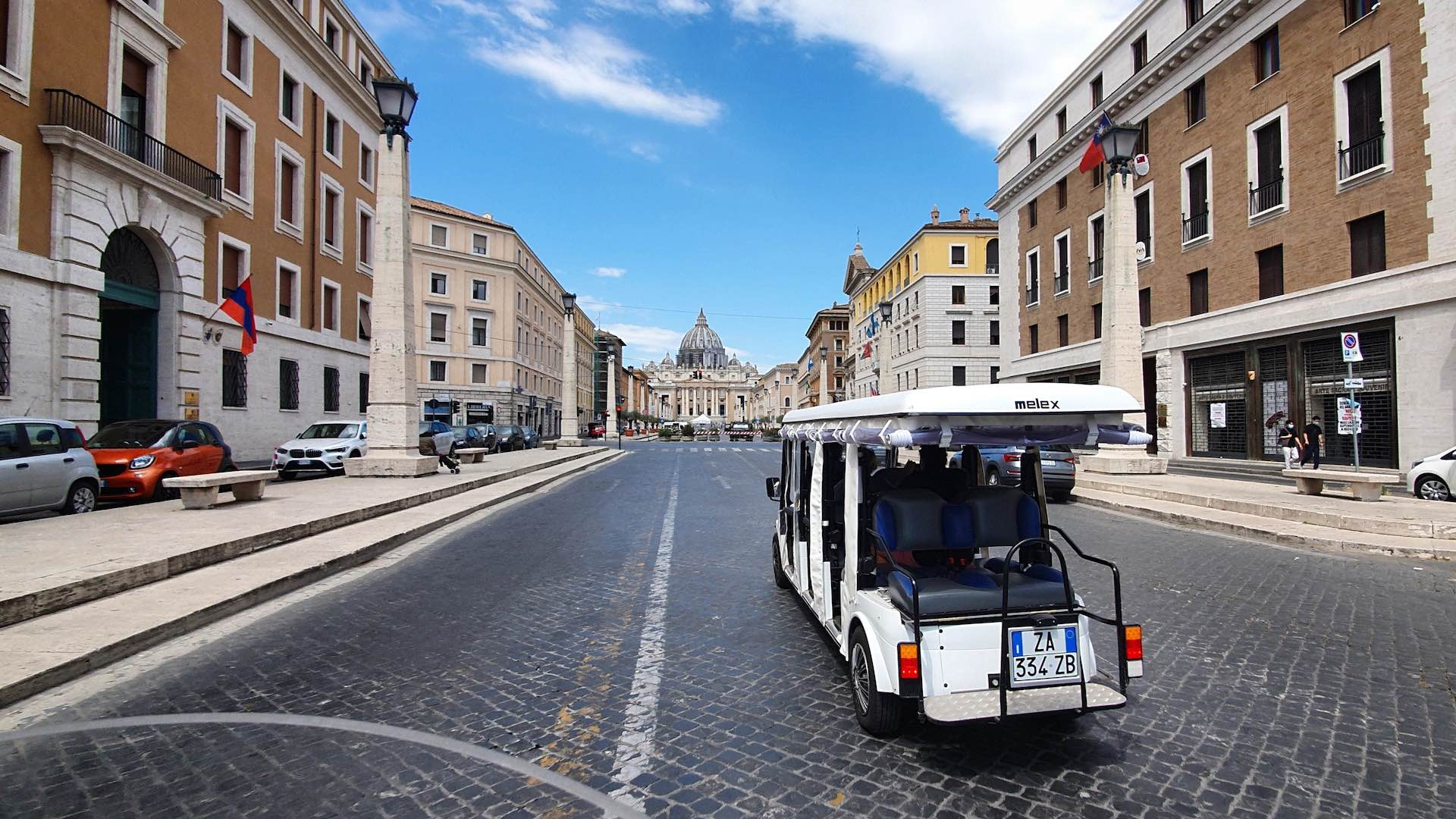Do you know the lore of the Roman gladiators?
The Colosseum gladiator arena, a majestic yet chilling monument, stands as a testament to the brutality and grandeur of the Roman Empire.
This article will delve into the world of Colosseum-gladiator spectacle. We will cover:
- The captivating but brutal world of gladiatorial contests
- The complex history of the Colosseum’s iconic structure
- The dual role of the Colosseum as a place of striking entertainment and a symbol of imperial power.
Let’s dive in!
Colosseum arena: The gladiators
In ancient Rome, the Colosseum was the place to be and its gladiator arena was what all eyes would be transfixed on. This epochal landmark is where the gladiators would showcase their training in the most brutal of scenarios, for an entertained public crowd to keep cheering on.
The gladiators were professionally trained fighters who came from amateur beginnings. Most were forced into the lifestyle, as they were criminals, slaves or prisoners of war. However, some were volunteers who would give up their lives as average Roman citizens.
Trained in special schools and staying on specific diets, these fighters spent years getting into shape before getting the chance to be in the Colosseum arena.
But was this a milestone to celebrate? The social and political influence of the ancient Roman empire is evident through the happenings of the Colosseum, and gladiators were to partake in the most gruesome and challenging events on the arena floor.
Sometimes they would have to be in combat with other gladiators or they would have to right animals.
Facing death was not off the cards.
A lot of gladiators would be directed to enter from the historically iconic gladiator’s gate. This is located on the eastern side of the Colosseum. It connected the Hypogeum (Colosseum underground) to the Colosseum arena floor.
This entrance was revered and added to the climactic effect of the event taking place.
Did you know that Walks Inside Rome offers tours that allow you to access the Colosseum through the gladiator’s gate instead of the standard tourist entrance?
So, what were the kind of contestants who got the spotlight of being on the Colosseum arena floor? Were all gladiators the same?
- Legionaries: These gladiators were skilled swordsmen who spent many years being trained in Roman military tactics;
- Retiarri: These gladiators would forgo swords for fishermen-style equipment such as nets and tridents. This was to evoke the image of Neptune-god of the sea. They would be pitted against other kins of gladiators who might represent fish in the theme of the event.
- Not all contestants were human! Exotic beasts like lions, tigers and bears often made it into the arena floor to either be hunted by gladiators or to devour criminals who were facing public execution.
Gladiator weapons were more diverse than you would imagine! They used different kinds of swords, daggers, the aforementioned tridents and nets, bows and arrows and even boxing gloves!
Their armor was specially designed and comprised of many components. Of course, they would wear the visored helmets that are such an iconic symbol of these fighters. They would also wear protective limb wrapping, chest plates, leg plates, shoulder guards, chain mail and a variety of shields to carry into their battle.
Gladiator training was diverse and grueling. They would be taught how to fight with swords, be trained in various hand-to-hand techniques and would also learn how to drive chariots!
Colosseum gladiator arena: the combats
Did you know that each contest format that took place in the Colosseum arena had its own name?
- Munera: From Latin this translates to ‘gift’. Wealthy citizens sponsored and hence ‘gifted’ the Roman public with this entertainment. These events were mostly violent and extravagant in nature. They mostly referred to gladiator contests.
- Venatio: Gladiators weren’t only pitted against each other. Venatio means ‘hunting’. It refers to events where gladiators would fight wild animals released into the Colosseum arena floor. These would put to test their courage and survival skills.
- Damnatio ad Bestias: This transcribes as ‘condemnation to beasts’. It was a brutal form of Roman capital punishment. Criminals would be flung into the arena pit to be torn apart by wild animals such as lions.
These were not the only permutations in events, but were the most popular.
How does a gladiator win a fight?
Not all gladiatorial combats end with death. Well-trained gladiators were expensive to replace!
The gladiator on the arena floor who was in the favor of winning- imagine one on the ground with the tip of the other’s sword pointed at the throat- would look up at the ‘editor’ for a final signal. This editor could be a senator or an emperor in the audience.
A gesture with the thumb would indicate whether a gladiator would be spared with mercy or killed.
Can you imagine the kind of anticipation that must build in the massive audience, awaiting a signal for the culmination of the event? Brutal, but very adrenaline-boosting! Sometimes their deafening roars on what decision should be made would also influence the editor!
Colosseum gladiator arena as a symbol
Commissioned by emperors, the construction of the Colosseum itself served as a display of wealth and dominance.
The seating arrangements of the Flavian amphitheater asserted the rigid class structure of Roman society:
- The lowest tier with the best view of the gladiator gate and arena floor was reserved for the emperor, priests and Roman senators.
- The second tier exclusively sat other Roman noblemen.
- The third tier provided seating for Roman citizens.
- The fourth tier, with the worst view of the arena floor, was reserved for women.
Emperors would use the games on the Colosseum arena floor to demonstrate their power and control over the masses.
With the fate of gladiators being in the hands of an editor(referee) who would be an emperor or from the senate- a simple gesture of the thumb would reveal whether a gladiator would be shown mercy or be killed- the influence of the emperor could clearly be seen and constantly re-instated.
With so many gladiators being prisoners of war and criminals, their public executions would serve as displays of conquered enemies and hence served as a reminder of Roman might.
Colosseum arena tickets
Do you know that Colosseum arena access is available for you in present day?
This Roman arena is captivating to venture into… it allows for the imagination to run wild and imagine the devastatingly remarkable entertainment of the ancient empire.
Through tours designed by Walks Inside Rome you can witness the architecture of the gladiator stadium and get submerged into sensory stories about ancient Rome’s famous entertainment venue told by one of our expert guides!
The Ancient Rome Tour with Gladiator’s Gate allows you to enter the Colosseum through the revered gate that has been standing for almost 2000 years. This portal feels magical to step through- almost like a time-traveling machine that will immediately whisk you into the world of the amphitheater.
Children tend to be absolutely enthralled by the world of the gladiators, making the Colosseum a brilliant, immersive, on-site learning space.
Our Colosseum themed treasure hunt allows for them to be able to locate and visualize important architectural traits of the amphitheater and brings to life the stories of racing chariots, brave combatants and the deafening roars of the crowd.
This customizable tour can also take the children to nearby attractions such as Circus Maximus and the Palatine Hill.
To book a tour with us and to have any queries answered you can email us at [email protected]. We are eager to help you squeeze all the potential out of your Colosseum experience!

